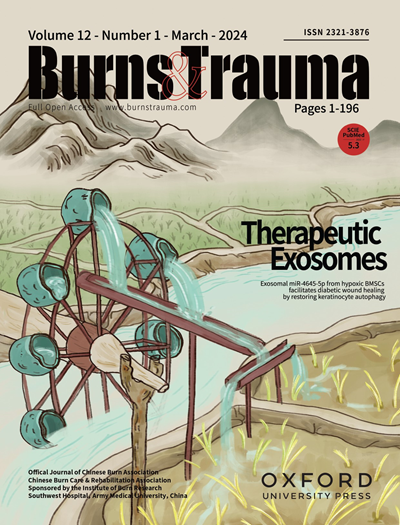金属半导体材料在骨病中的应用:性能、应用和未来展望
IF 9.6
1区 医学
Q1 DERMATOLOGY
引用次数: 0
摘要
骨组织工程的目标是开发创新的生物材料和刺激策略来促进骨再生。生物电材料在这一领域发挥着至关重要的作用,因为它们启发了骨骼固有的压电特性。本文综述了金属半导体材料在骨组织工程中的应用进展,重点介绍了金属半导体材料的工作机制、各种材料分类以及它们促进骨再生的方法。首先,讨论了金属半导体材料的工作原理,强调了生物电现象在调节细胞行为中的重要性。由于其在模拟电生理微环境中促进骨再生方面的作用,我们重点介绍了各种类型的金属半导体材料,如金属半导体材料、压电材料和导电生物材料。个性化和特定的材料,包括导电智能支架,改良种植体表面,以及针对骨组织,促进骨整合和发挥抗菌性能的材料,服务于骨组织工程的各种应用。此外,为了提高种植体的生物相容性和骨整合性,金属半导体材料在骨科种植体设计中具有良好的临床应用前景。最后展望未来金属半导体材料在骨工程中的应用,集成多功能、个性化医疗、生物可降解材料,以及纳米技术和3D打印技术的应用,可能会满足临床需求。本文还介绍了金属半导体材料的生物学特性及其在骨病治疗中的最新应用,并讨论了其设计和开发的创新概念。本文章由计算机程序翻译,如有差异,请以英文原文为准。
Metal Semiconductor Materials in Bone Diseases: Properties, Applications, and Future Perspectives
The objective of bone tissue engineering is to develop innovative biomaterials and stimulation strategies to promote bone regeneration. Bioelectric materials play a crucial role in this domain owing to their inspiration of the inherent piezoelectric properties of bone. This review explores the progress made in utilizing metal semiconductor materials for bone tissue engineering, focusing on their operating mechanisms, various material classifications, and the ways they foster bone regeneration. First, the working principles of metal semiconductor materials are discussed, with an emphasis on the importance of bioelectric phenomena in regulating cell behavior. Owing to their roles in mimicking the electrophysiological microenvironment to promote bone regeneration, we highlight various types of metal semiconductor materials, such as metallic semiconductor materials, piezoelectric materials, and conductive biomaterials. Personalized and specific materials, including conductive smart scaffolds, modified implant surfaces, and those that target bone tissues, promote osseointegration, and exert antibacterial properties, serving diverse applications in bone tissue engineering. Additionally, to improve implant biocompatibility and osseointegration, the use of metal semiconductor materials in the design of orthopedic implants has shown promising clinical application prospects. Finally, looking forward to the future applications of metal semiconductor materials in bone engineering, integrating multiple functions, personalized medicine, and biodegradable materials, as well as the application of nanotechnology and 3D printing techniques, may arise to satisfy clinical requirements. This review also presents the biological characteristics of metal semiconductor materials and their recent applications in treating bone diseases, while also discussing innovative concepts for their design and development.
求助全文
通过发布文献求助,成功后即可免费获取论文全文。
去求助
来源期刊

Burns & Trauma
医学-皮肤病学
CiteScore
8.40
自引率
9.40%
发文量
186
审稿时长
6 weeks
期刊介绍:
The first open access journal in the field of burns and trauma injury in the Asia-Pacific region, Burns & Trauma publishes the latest developments in basic, clinical and translational research in the field. With a special focus on prevention, clinical treatment and basic research, the journal welcomes submissions in various aspects of biomaterials, tissue engineering, stem cells, critical care, immunobiology, skin transplantation, and the prevention and regeneration of burns and trauma injuries. With an expert Editorial Board and a team of dedicated scientific editors, the journal enjoys a large readership and is supported by Southwest Hospital, which covers authors'' article processing charges.
 求助内容:
求助内容: 应助结果提醒方式:
应助结果提醒方式:


